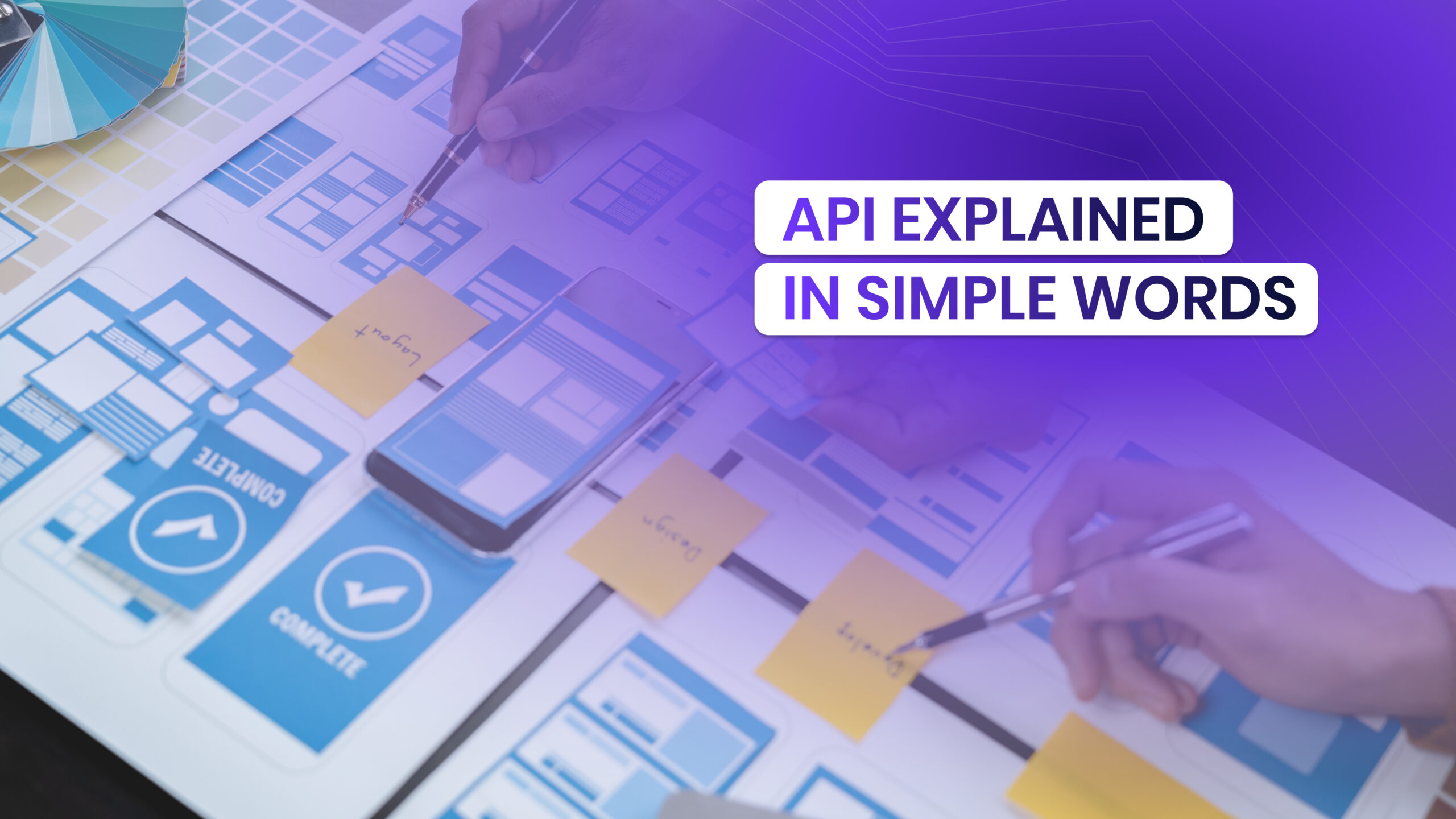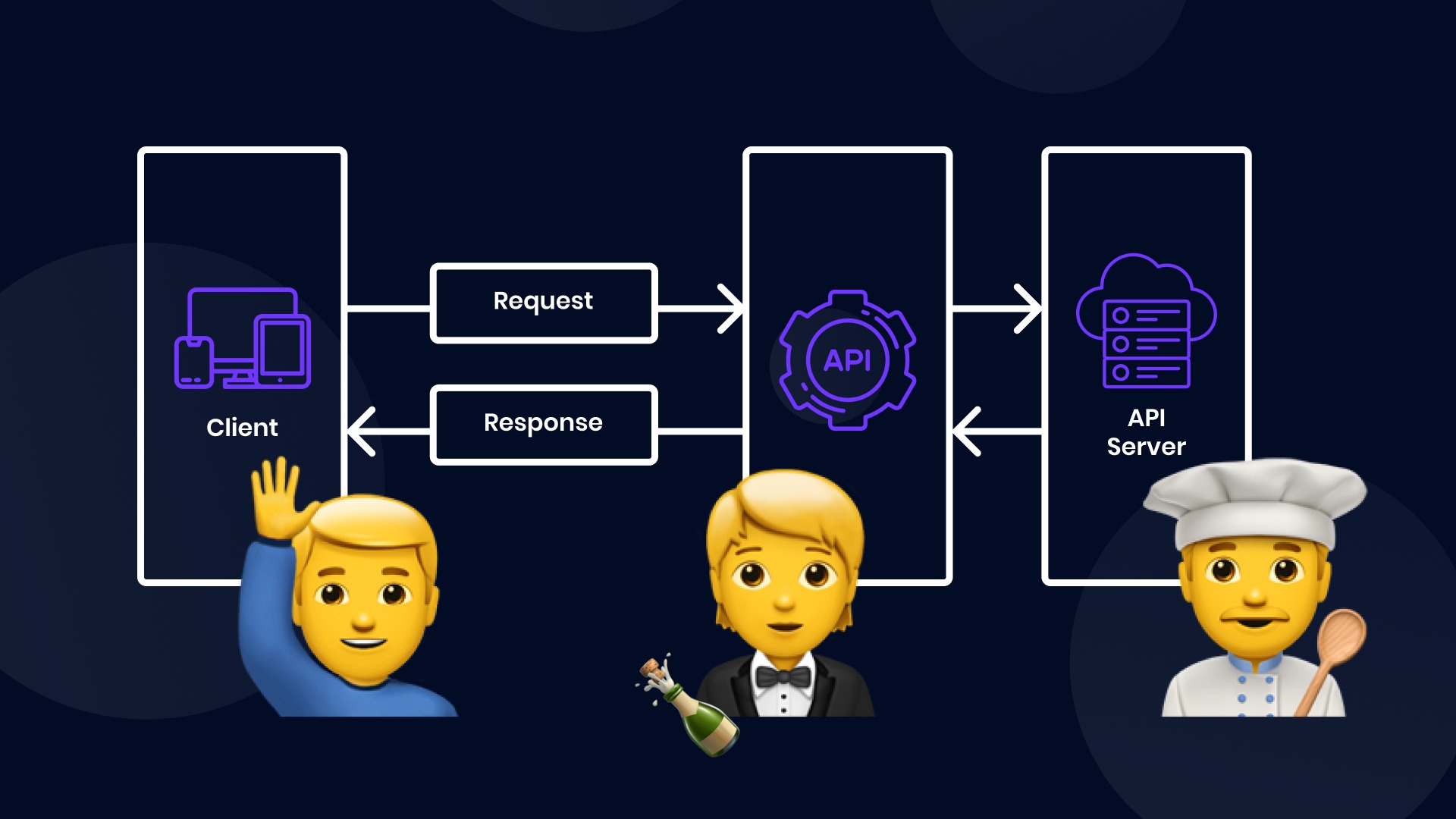
Imagine you’re at a restaurant. You don’t need to know how the kitchen operates or where the food comes from. You simply look at the menu (the API) and order what you want. The waiter (the API) takes your order, communicates it to the kitchen (the system), and brings you the food (the data).

In simpler terms, an API is a set of rules that allows different software programs to talk to each other. It’s like a messenger that carries information between two applications. This makes it easier for developers to build new things without having to start from scratch.
For example, a weather app uses an API to get data from a weather service or a social media app uses an API to share content on other platforms. Essentially, APIs allow different software applications to work together seamlessly.
API definition
API (Application Programming Interface) is a set of protocols, routines, and tools for building software applications. It specifies how software components should interact. Essentially, an API acts as an intermediary, allowing different software applications to communicate and share data without requiring knowledge of each other’s internal implementation.
How does API work?
An API is a mediator between two software applications, enabling them to communicate and exchange data. This interaction occurs through a request-response cycle.

- Request. A client application (like a mobile app or website) sends a request to an API server. The request typically includes specific parameters or data.
- Processing. The API server receives the request, processes it based on predefined rules, and accesses the necessary data or performs required actions.
- Response. The API server sends a response back to the client, containing the requested data or a status indicating the outcome of the request.
What are the key components of an API?
An API consists of several key components that work together to facilitate communication between software applications. Here are some of them:
Endpoints. These are specific URLs that represent the resources or data accessible through the API. For example, https://api.example.com/users might be an endpoint for retrieving user information.
HTTP methods. These dictate the type of action to be performed on a resource. Common methods include:
- GET: Retrieve data
- POST: Create new data
- PUT: Update existing data
- DELETE: Delete existing data
Headers. Additional information sent with the request, such as authentication credentials, content type, and request parameters.
Request body. Data sent to the API server for processing, often in JSON or XML format.
Response. The data returned by the API server, typically in JSON or XML format, along with a status code indicating the success or failure of the request.
Documentation. Detailed information about the API’s capabilities, endpoints, parameters, and expected responses.
How do you use API in practice?
Every modern application you use uses APIs. Weather apps use APIs to fetch weather data for different locations. An e-commerce website integrates payment gateways using their APIs to process transactions, and a mapping application incorporates maps and directions using Google Maps API.
Using an API typically involves several steps.
- Finding a suitable API. Identify an API that offers the data or functionality you need. Popular platforms like Google, Twitter, and many others provide public APIs.
- Understanding the API documentation. Carefully read the API documentation to learn about endpoints, parameters, request formats, and expected responses.
- Obtaining necessary credentials. Some APIs require authentication, so you’ll need to obtain API keys or tokens.
- Making API calls. Use programming languages (like Python, JavaScript, or Java) to construct HTTP requests to the API’s endpoints.
- Parsing the response. Process the data returned by the API to extract the desired information.
- Handling errors. Implement error handling mechanisms to gracefully handle unexpected responses or API failures.
Remember that most APIs have usage limits, so be mindful of your request frequency. Handle sensitive data securely, comply with relevant regulations, and be prepared for API changes and updates.
« Back to Glossary Index

